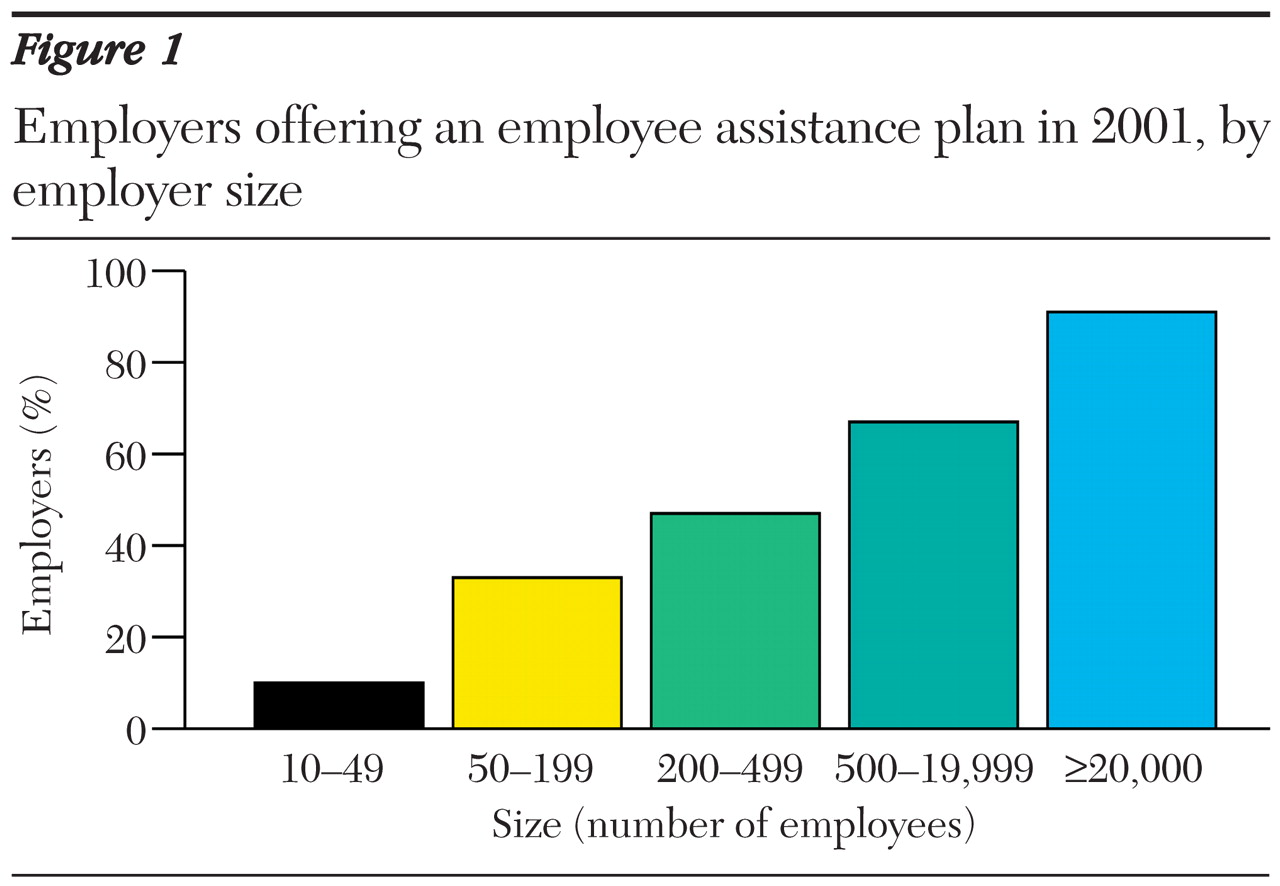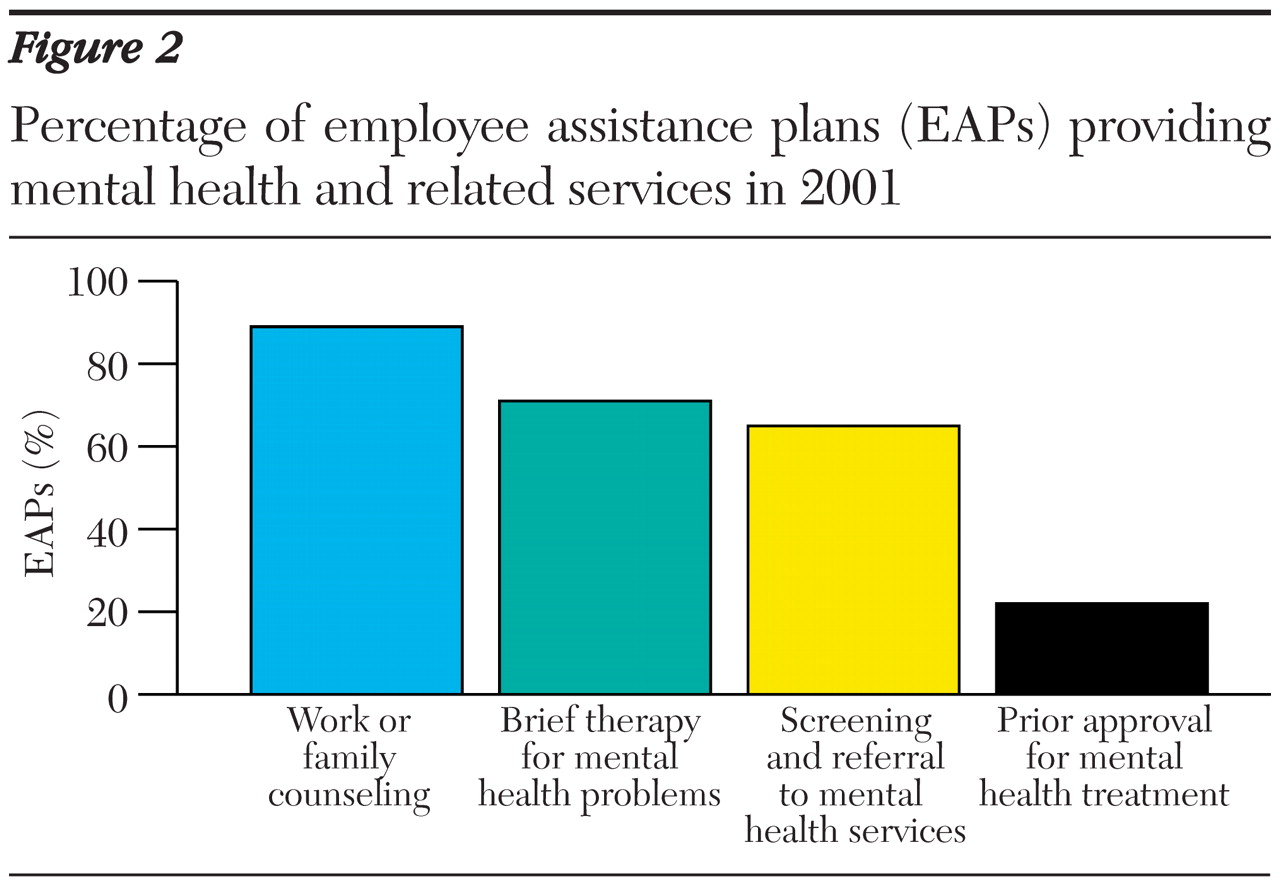Employee assistance programs (EAPs) help employees with work, personal, and family concerns such as legal, marital, and financial problems. Many EAPs directly offer mental health services or related services.
Here we present recent information on the use of EAPs and on the mental health services these programs provide. Data are from the 2001 Mercer/Foster Higgins National Survey of Employer-Sponsored Health Plans, which was based on a stratified random sample of employers with at least ten employees. The survey collected information on health benefits provided by employers and included several questions on EAPs. Responses were received from 2,180 employers, for a response rate of 74 percent. Of these, 2,100 provided responses to the EAP-related questions. Survey responses were weighted to be representative of all U.S. employers with at least ten employees.
Seventeen percent of the firms offered EAPs in 2001. The likelihood of offering an EAP increased substantially with the number of employees (
Figure 1): whereas only 10 percent of employers with fewer than 50 employees offered an EAP, nearly all employers with 20,000 or more employees did so. Fifteen percent of employers that offered EAPs reported that these programs were staffed by internal staff only; among the remainder, most programs were administered by the same organization that administered behavioral health benefits for the most commonly used health plan. The EAPs of 79 percent of the employers provided face-to-face counseling rather than telephone counseling only. The mean maximum allowable number of counseling sessions was six, and the median was four (data not shown).
The percentages of employers providing specific mental health and related services through their EAPs are shown in
Figure 2. Nearly all employers reported that their EAPs provided counseling or referral services for work or family issues. At least two-thirds provided brief therapy for behavioral health problems (including substance abuse) and voluntary screening or referral for behavioral health services. However, contrary to the perception that EAPs serve primarily as "gatekeepers" for behavioral health benefits, less than a quarter of the employers reported that their EAPs provided mandatory prior approval for care.
These data not only provide information about the availability and scope of EAP services but also highlight the need for detailed national-level data on the relationship of EAPs to other employer-sponsored mental health benefits. Future research should focus on issues such as rates of use of various EAP services, characteristics of EAP users and providers, and EAP clients' use of other behavioral health services. Such data are necessary if the role of EAPs in the mental health service delivery system is to be fully understood.



